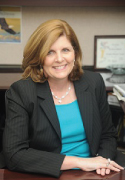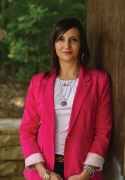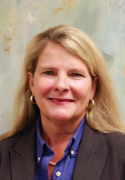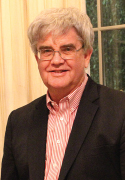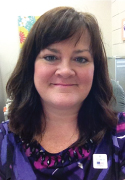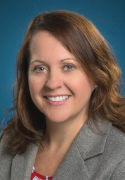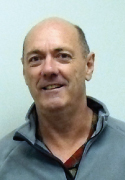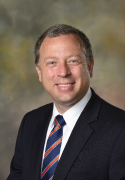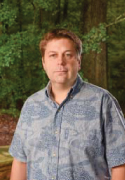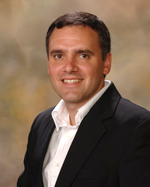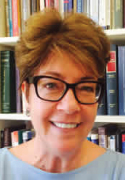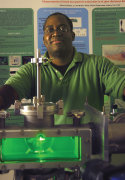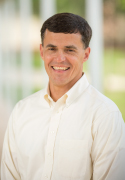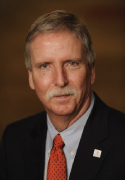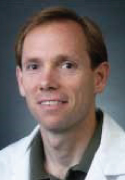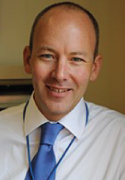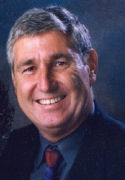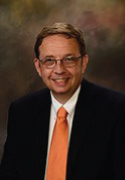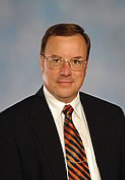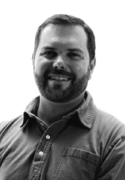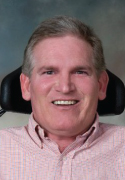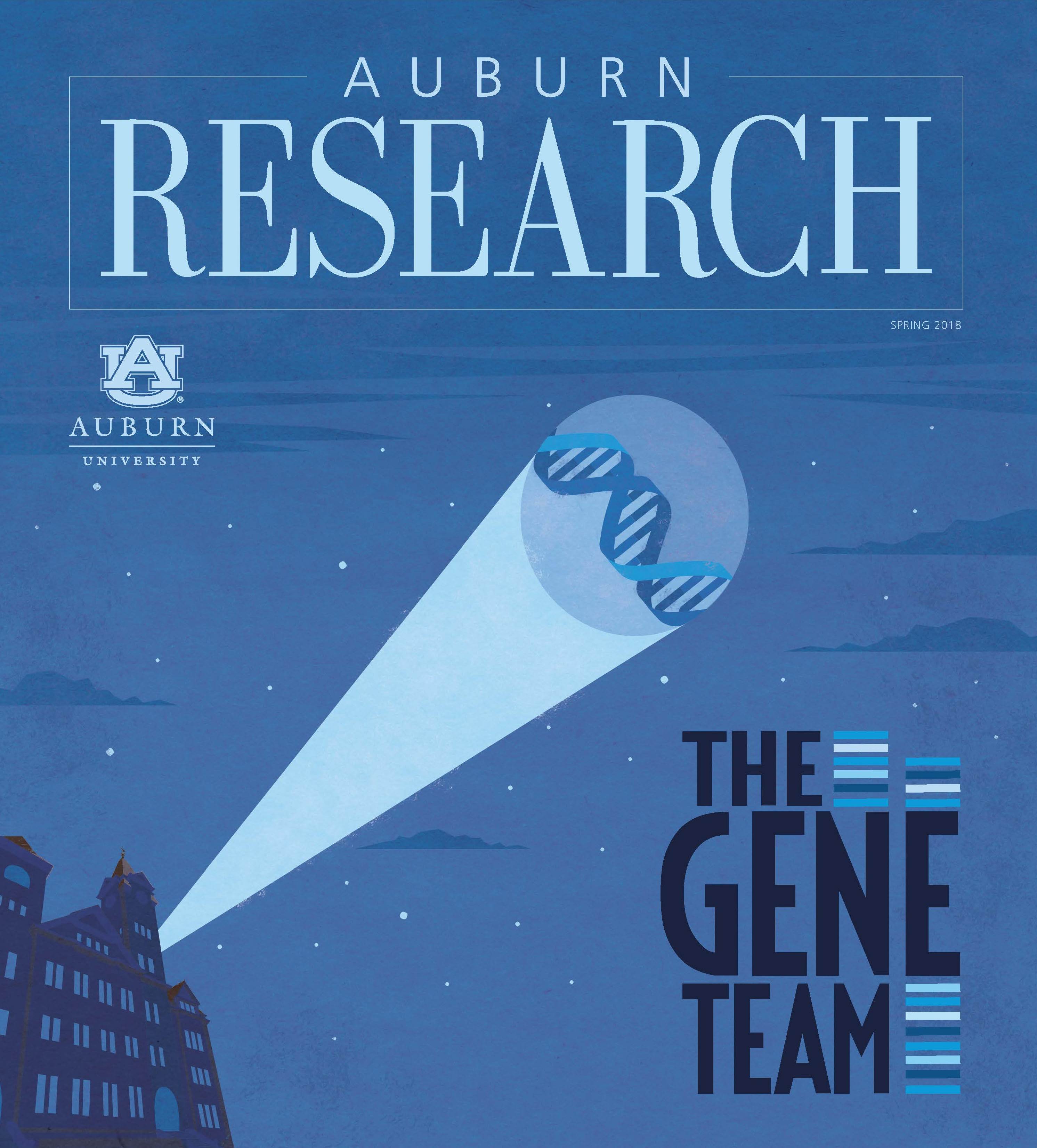Research Videos and Spotlight Articles
Cool Research from the Health Disparities ClusterFebruary 29, 2019 Dr. Thomas Fuller-Rowell, associate professor in the Department of Human Development and Family Studies, introduces the research of the Health Disparities cluster. Dr. C. Edward Chou, associate professor in the Department of Health Outcomes Research and Policy, speaks on “Transitions of Care: How can we advance healthcare in vulnerable populations by utilizing pharmacists’ expertise?” Dr. Michael D. Brown, professor in the School of Kinesiology, discusses his research on “Improving Vascular Health and Hypertension in African Americans.”

|
Cool Research from the Scalable Energy ClusterDecember 6, 2018 Dr. Andrew Adamczyk, assistant professor in the Department of Chemical Engineering, introduces the research of the Scalable Energy cluster and discusses his own lab's work on multi-scale modeling of reacting chemical and biological systems. Dr. Soledad Peresin, assistant professor in the School of Forestry and Wildlife Sciences, gives an overview of her research on the development of nanocellulose-based products.

|
Cool Research from the Undergraduate Research ProgramAugust 31, 2017 Dr. Robert Holm, associate director of Proposal Services and Faculty Support, introduces Dr. Lorraine Wolf, director of the Office of Undergraduate Research, and student presenters, Madison Gohlke and Ethan Hofer. Dr. Wolf gives an overview of the Undergraduate Research Program. Madison Gohlke, then a senior in animal sciences, talks about her work on a research project comparing a handheld glucometer with a clinical biochemical analyzer to measure glucose in porcine blood samples. Ethan Hofer, then a senior in materials engineering, discusses research on electroactive polymers.

|
Cool Research from the Honors CollegeMay 25, 2017 Dr. Robert Holm, associate director of Proposal Services and Faculty Support, introduces presenters, Dr. Carole Zugazaga and Dr. Nanette Chadwick. Dr. Zugazaga, associate professor and department chair in Social Work, discusses her research seminars on homelessness. Dr. Chadwick, associate professor in Biological Sciences and director of academic sustainability programs for the Office of the Provost, gives an overview of marine research courses she taught in 2014 and 2016.

|
Cool Research from the College of Veterinary MedicineFebruary 9, 2017 Dr. Frank Bartol, associate dean for research and graduate studies in the College of Veterinary Medicine, introduces speakers, Dr. Heather Gray Edwards and Dr. Paul Waggoner. Dr. Gray Edwards presents findings from her research on Tay-Sachs disease in sheep. Dr. Waggoner discusses his work with Dr. Craig Angle and the Canine Performance Sciences detector dog program.

|
Cool Research from the School of NursingDecember 1, 2016 Dr. Caralise Hunt presents on the self-management of type-2 diabetes and her research involving the use of an iPad app for diabetics.

|
Cool Research from the Raymond J. Harbert College of BusinessFebruary 25, 2016 Dr. Brian Bourdeau, associate professor in Marketing, details his work in consumer marketing research. Dr. Brian Connelly, Luck eminent scholar and professor in Management, presents highlights from his research in corporate governance structures. |
 |
Cool Research from the Samuel Ginn College of EngineeringAugust 27, 2015 Dr. Bruce Tatarchuk, Charles E. Gavin III professor in Chemical Engineering and director of the Auburn University Center for Microfibrous Materials Manufacturing, discusses the future of scalable energy conversion research. Dr. David Bevly, McNair professor in Mechanical Engineering, highlights autonomous vehicle research at Auburn University.

|
Cool Research from the College of Architecture, Design & ConstructionMay 28, 2015 Dr. Karen Rogers, associate dean for research, highlights several ongoing projects from the College of Architecture, Design & Construction. Included are the Rural Studio and accessibility design projects. |
 |
| Presenter / College / Title | 9:30 AM - 11:00 AM Auburn Talks Presentations |
|---|---|
|
College of Education TRANSITIONS: WHY ARE THEY SO DIFFICULT FOR SOME? |

Everyone experiences many transitions throughout their lives. These transitions can be challenging for those engaged in the process, as well as for their loved ones. This is especially true for one group of individuals. People with disabilities have the same hopes, desires, and aspirations as those without disabilities. They want to work, live independently, and become engaged members of their communities; however, for some, their disabilities pose significant barriers in their quest for integrated and productive lives. Learn how research, outreach and instruction at Auburn University is building brighter futures for persons with disabilities. |
|
School of Forestry & Wildlife Sciences RETHINKING THE USE OF TREES: ADVANCED MATERIALS FROM NANOCELLULOSE |

Produced by chemical, mechanical, or enzymatic processing of lignocellulosic feedstock, nanocelluloses are nanosized cellulose particles with remarkable properties and are very appealing for multiple novel applications in materials science. |
|
College of Veterinary Medicine UNDERSTANDING NATURAL SELECTION IS ESSENTIAL FOR VIRAL DISEASE CONTROL |

Poultry meat and eggs constitute the most important protein source for human consumption worldwide. Preventing viral diseases by vaccination in commercial poultry assists in maintaining poultry products at an affordable price for the consumer. Vaccine development poses significant challenges. One of most relevant obstacles is “antigenic variation” among viral strains, i.e., viruses rapidly change their “look” and successfully escape defense responses induced by vaccination. The evolutionary mechanisms, originally proposed by Darwin, explain how viruses remain the most relevant problem affecting human and animal health. Understanding these mechanisms is essential for virus disease control. |
|
Harbert College of Business FORE! AN ANALYSIS OF EXECUTIVE SHIRKING |

Economists emphasize performance-based compensation because we believe that people work harder (and better) when they have “skin in the game.” But it’s challenging to test this theory empirically, because people avoid being observed “shirking” their responsibilities. In this talk, I will discuss new evidence suggesting that this principle is not only true, but often neglected, in the upper echelons of corporate America. Evidence of the costs imposed by under-incentivized executives is made possible by our analysis of a novel measure of executive leisure consumption: the amount of golf they play. |
|
College of Liberal Arts A GENDER COMPARISON OF HBCU'S AND PWI'S IN THE SOUTHEAST |

This study examines twenty-five doctoral granting land grant institutions in the southeastern Unites States in order to compare hiring, rank, and salary by gender and by university type: Historically Black Colleges and Universities (HBCUs) and Predominantly White Institutions (PWIs). The comparison—drawn from raw data reported by the institutions to the National Center for Education Statistics between 1980 and 2011—indicates surprising differences related to rank and salary between men and women. While gender disparities in salary and promotion persisted at both institution types, these gaps widened more significantly at PWIs than at HBCUs. |
|
Harrison School of Pharmacy EMERGING SYNTHETIC DRUGS: DESIGNERS AND DINOSAURS |

New synthetic drugs of abuse are appearing at a greater rate than ever before in our history. The origin of these new psychoactive substances is a mixture of newly designed molecules and older re-purposed drugs. These synthetic substances can exist in a number of different forms sharing similar analytical signatures yet differing in biological activities and legal status. The ability to distinguish between controlled and imposter forms of drug substances is extremely important in forensic drug identification. Our work involves characterization and differentiation of these imposter molecules creating boundary issues at the interface of the synthetic processes, the analytical signature and the nature of the legal control. This talk will describe examples of synthetic opiates, cannabinoids and cathinone drug classes. |
| Presenter / College / Title | 1:00 PM - 2:30 PM Auburn Talks Presentations |
|
Tony Overfelt Samuel Ginn College of Engineering MANUFACTURING IN ALABAMA: YESTERDAY, TODAY AND TOMORROW |

Although the underlying principles of chemistry and physics that control manufacturing have not changed since the first metal components were produced thousands of years ago, the ways we understand and control manufacturing processes are changing rapidly. Today, manufacturing processes can be accurately controlled by state-of-the-art production systems to precisely build metal structures for aerospace, orthopedic and automotive applications that were not imaginable just 10 years ago. This talk will look at the history of manufacturing in Alabama across the years and explore some of the rapid developments occurring in Alabama as 3D printing and additive manufacturing take their place as mature production technologies. |
|
Xavier Vendrell College of Architecture, Design & Construction 20K HOME: BEAUTIFUL, AFFORDABLE, EFFICIENT, DURABLE AND WELL-BUIL |

In Rural Studio’s 20K Home project students are faced with the challenge of designing a house that can be built quickly and affordably by a contractor in a market-rate economy. In taking the 20K House from “Project to Product,” Rural Studio has expanded its engagement to include outside consultants to aid in aligning the design with the International Residential Code as well as FHA, USDA, and HUD guidelines. The goal of this project is to offer up these documents free of charge to anyone who wishes to procure a housing product that is dignified, affordable, and sustainable. |
|
College of Sciences & Mathematics IMPACT OF INFECTION AND IMMUNITY ON METABOLISM AND THE MICROBIOME: DISCERNING THE MECHANISMS OF SICKNES |

The symptoms of illness associated with infectious disease have a profound effect on the productivity of the host and more broadly, on the work force. Fever, body aches, nausea, and fatigue are metabolically demanding and can markedly restrict the performance of the host. Many of these symptoms stem directly from the host’s immune response and are regulated in part by the microbiome. The goal of our project is to define how specific components of the immune response and gut microbiota contribute to the systemic metabolic profile of illness. The insights provided by this study will inform the design of therapeutics to ameliorate these symptoms. |
|
College of Human Sciences AI BOTS ENABLING INTELLIGENT CONSUMER DECISION |

Consumption decisions are quintessential aspect of human existence. Rational choice theory predicts that consumers can make choices to maximize their desired attributes. Despite this, sub-optimal decisions for food, homes, and health insurance underscore a variety of our nation’s problems today. Our research designs, develops, and evaluates intelligent, naturalistic decision aids (bots) that are built on a solid science base of psychological theories combined with an experiential understanding of consumer decision-making. These bots use natural language to infer human thinking, adapt to user- and object-triggered decision strategy use, and arrive at informed choices by augmenting the natural way in which humans make decisions. |
|
School of Nursing THE POWER OF SYNERGY: EMPHASIZING COMMUNITY PARTNERSHIPS TO IMPROVE CHILD HEALT |

Alabama has the second highest obesity rate in the U.S., and diabetes and hypertension have exploded, particularly in children less than 18 years of age. The purpose of this AU talk is to highlight synergy among child health as we introduce a new project titled TigerCHAT. Synergy is the interface of multiple partnerships to generate a combined effect greater than the sum of their separate effects. TigerCHAT is a comprehensive health education project provided to rural, school-aged children focused on behaviors associated with poor child outcomes. The focus is placed on sustainability of this project through the power of synergy. |
| Presenter / College / Title | Presentation |
|---|---|
|
College of Agriculture |

|
|
Danielle Willkens & Junshan Liu College of Architecture, Design & Construction |

|
|
Harbert College of Business |

|
|
College of Education |

|
|
Samuel Ginn College of Engineering |

|
|
School of Forestry & Wildlife Sciences |

|
|
Stephen Erath College of Human Sciences |

|
|
College of Liberal Arts |

|
|
School of Nursing |

|
|
Harrison School of Pharmacy |

|
|
College of Sciences & Mathematics |

|
|
College of Veterinary Medicine |

|
| Presenter / College / Title | Presentation |
|
College of Veterinary Medicine “Molecules, Morphogenesis, and the Milky Way” |
 |
|
College of Science & Mathematics "Climate Change & Wildlife: What's Changing?" |
 |
|
College of Human Sciences "How I came to Study Sugar" |
 |
|
School of Pharmacy "Advancing the Science of Drug Safety" |
 |
|
College of Business "Helping Old Dogs Learn New Tricks: Retailers Use RFID Technology for Smart Inventory Counting" |
 |
|
College of Education "Follow Your Gut" |
 |
|
College of Liberal Arts "How the Brain Handles Memory: A Detailed Look at the Hippocampus" |
 |
|
School of Nursing "Preventative Cardiology: Research to Practice" |
 |
|
College of Engineering "Cyber War & Peace" |
 |
|
College of Engineering "Scalable Energy & Chemical Conversions Using Stranded Resources: Scholarly Research & Societal Impacts" |
 |
|
College of Agriculture "Swords into Plowshares: How UAV's are Helping Us Become Better Stewards of the Land" |

|
|
School of Forestry & Wildlife Science "Application of Soy in Forest Products: A Marriage of Agriculture & Forestry |
 |
|
Jerrod Windham - Co Presenter College of Architecture, Design & Construction "Assistive Technology in the 21st Century: The Shift from Universal to Highly Customized Design Solutions"
Scott Renner - Co Presenter College of Education "Assistive Technology in the 21st Century: The Shift from Universal to Highly Customized Design Solutions" |
 |
Marble sculptures, model trains and chamomile tea
Diverse hobbies serve as secondary passions for some Auburn research faculty
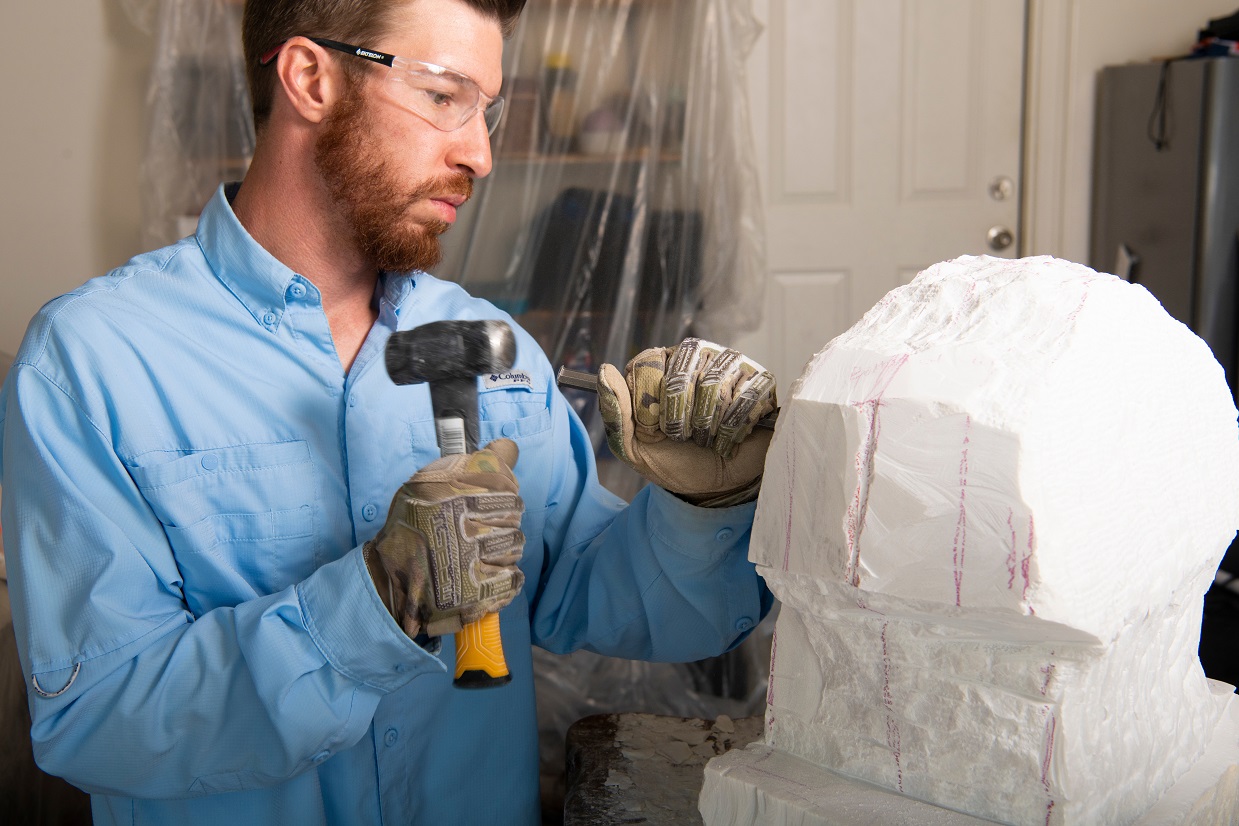
Pictured: Michael Zabala carves marble.



